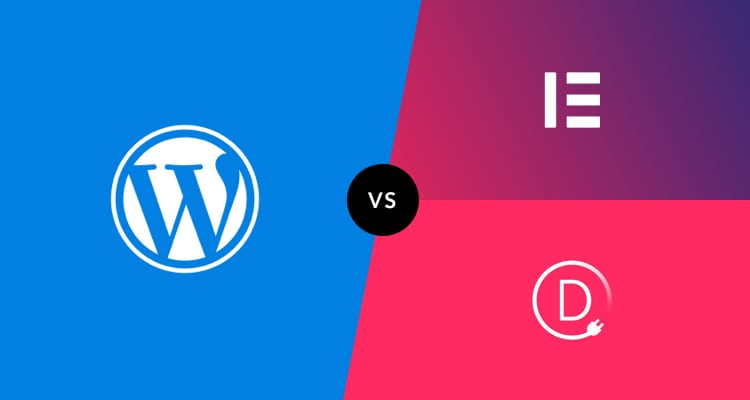Attempting to address multiple target audiences through a content marketing strategy can be a lot like yelling into a megaphone and hoping no one plugs their ears. While it’s important to get your message out, it’s even more critical that your content marketing strategy resonates across all audiences, no matter their individual preferences.
BIG or small, short or TALL, old and boooring or young and exciting; consumers come in all shapes, sizes, and age brackets. Seriously, think about it. There’s a very good chance your customer base is not comprised of just one singular buyer persona, rather, it is more likely made up of a multitude of people and personality types. And if you fail to recognize and speak to your entire audience, it can cost you real leads and money.
But developing a content marketing strategy that echoes across the vast business landscape can be tricky. So, before you crank out that all-inclusive content and press send, proceed with caution.
Here’s the Dilemma :(
Content marketing strategy that speaks to two or more audiences is possible, and actually fairly common—but doing it well is rare. Too many companies are guilty of creating content that either alienates or disengages one or more audiences. And quite obviously, neither strategy is ideal.
For instance, lots of businesses waffle between their larger and smaller clients, knowingly creating content for one audience one week and the other the next. The issue here is careless exclusion. Both customers are important, but only one customer at a time is feeling like their needs are being addressed, which means the other is feeling frustrated and forgotten.
However, just the same, those businesses that paint ALL their messaging with broad-brushed, generic strokes are enlisting equally ineffective approaches. While it’s a nice thought to navigate cleanly down the middle, playing it too safe can make all audiences bored. Like a telemarketing call, each audience can sense that every message they receive was actually not intended for them in particular; it was just for everyone—meaning it’s not actually for anyone.
In the end, these content marketing strategies fail. And in the end, they are costly in all the wrong ways.
Here’s the Solution :)
As a company, it must become your mission to cater to your entire client base, which means you must identify specific pain points and then offer appropriate solutions. This will be key moving forward.
Take a company like Whole Foods Market, for instance. This specialty grocer chain has a sophisticated content marketing strategy and features a blog section on its website that is updated regularly containing a plethora of healthy tips and ideas for any and all of its consumers. It features a variety of posts that speak to their entire health-conscious clientele, but still manages to focus on the consumer’s individual tastes.
Embracing a content marketing strategy similar to Whole Foods, with a few tweaks here and there to fit your individual goals, will undoubtedly help you outmaneuver others riding on the slow-moving marketing ship.
Here’s How to Get It Done!!!
Here are 4 easy steps you can take today to build the ideal multi-audience strategy:
1. Create a Content Calendar
- Step one is to create something known as a content spreadsheet or content calendar. At the root of this should be creating a content strategy that communicates the core position of your company. The challenge here is not to go so basic that you become bland. For the moment, forget about your audiences and concentrate on what you do best and what you want your brand to represent. This will be the root system for all your marketing messages to sprout from and support.
2. Listen to Your Audience
- Step two is to really listen to your audiences. Through social media and market research, identify the topics and moods that resonate most with your separate audiences. A good way to do this is through testimonials and FAQs. Listening to and responding to these comments and questions from your client should be part of your overall online marketing strategy. This information can also be used to craft separate messages that appeal to your different audiences. Though the messages may be very different, they must remain compatible with each other and tie back to your root system.
3. Deliver Your Message
- Step three is taking the messages to your audience. Here is where your message can be more direct. Different audiences tend to be more active along different media channels. This step may also be a good time to assess how you want to communicate with your individual clients through social media. There are many tools at your disposal. Your messages need to link back to different landing pages, each designed for that specific audience. A landing page can serve your website like neighborhoods in a great city. Messages can be specific and relevant to each audience with content that guides them through to your sales page. We find an effective way to communicate to clients is through a company blog.
4. Let Your Audience Be the Boss
- Step four is giving your audience the chance to self-select which group they belong to, which then allows them to listen to the messages that matter most to them. Also known as market segmentation, this process involves subdividing a large homogenous market into clearly identifiable segments. As long as the messages don’t contradict each other and all serve to support your brand positioning, you will be able to captivate as many audiences as you can serve.
If there’s one thing to take away from this post, it should be just how critical it is to communicate, both inside and outside of a vacuum. The ability to refine this communication and ensure that your message captures the attention of all your customers—all of them—will be a key indicator of whether your company has what it takes to do the job.
Have questions about your content marketing strategy? Let us know in the comments below or on Twitter. We’d love to chat!




